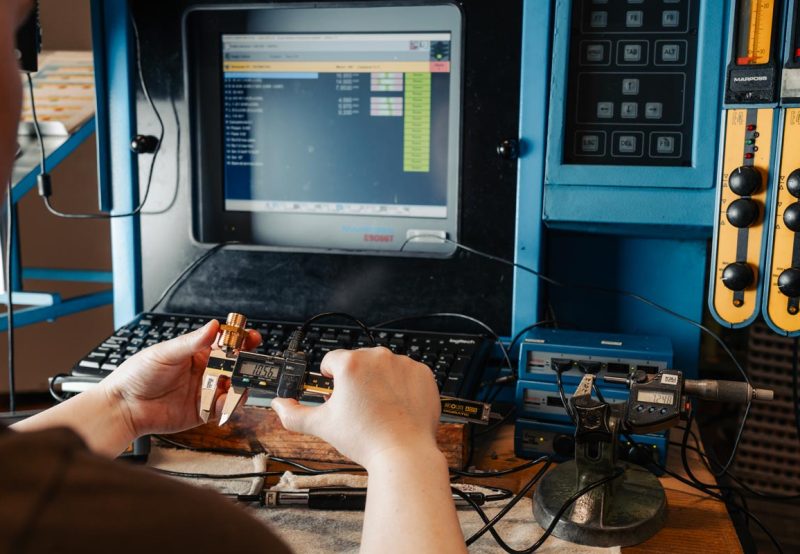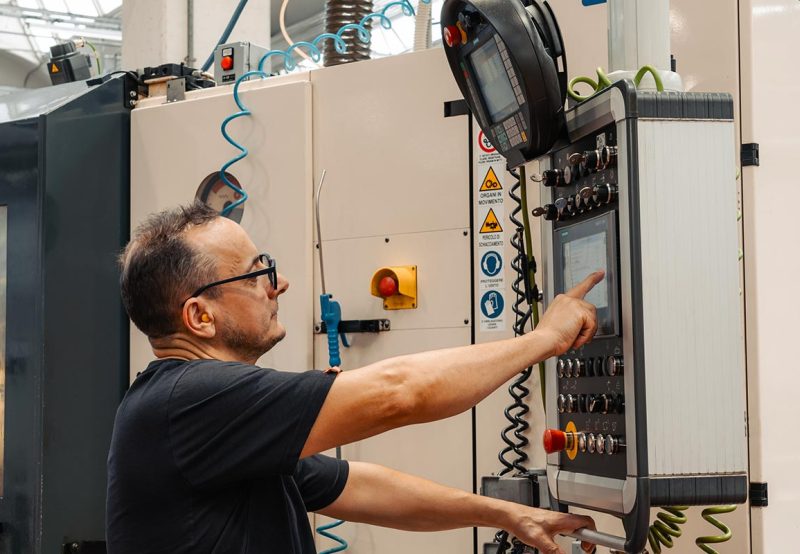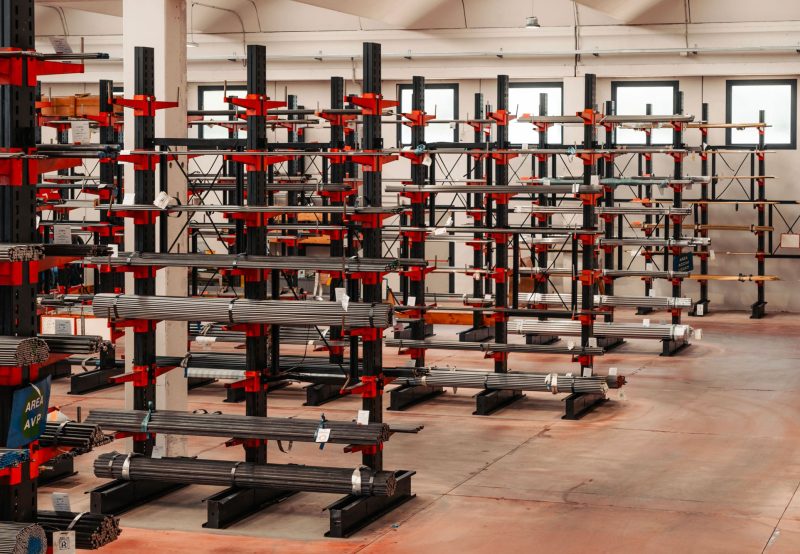The CNC lathe uses a digital programming system capable of guiding every stage of machining with extreme precision. Thanks to the synergy between servo motors, spindles, and feed systems, the tool moves along perfectly calculated trajectories, reaching micrometric tolerances that would otherwise be difficult to achieve. The CNC lathe makes a difference by combining precision, speed, and reliability in one single technology.
How a CNC lathe works
The CNC lathe is a technology that combines automation, precision, and speed. Its operation is based on a simple principle: converting a digital program into real and perfectly coordinated movements of the machine’s mechanical components.
The programming software translates the part design into a series of numerical commands, which are then interpreted by the control unit. Using servo motors, high-precision devices that regulate the position and speed of the working axes, the tool moves along micrometric trajectories.
The spindle’s task is to hold and rotate the raw part, operating in perfect sync with the feed systems of the CNC lathe. This combination allows for extremely controlled material removal, producing smooth, regular surfaces. With sensors and feedback systems, every movement is continuously monitored and corrected in real time, ensuring full fidelity to the original design.
The CNC lathe and the advantage of repeatability
The strength of the CNC lathe lies in its ability to guarantee excellent repeatability. Every part produced faithfully reflects the design specifications, eliminating most of the variables tied to manual intervention. Unlike traditional lathes where the operator manually adjusts speed, depth of cut, and feed the CNC drastically reduces the margin of human error and optimizes processing times, increasing productivity. Once programmed, the same part can be reproduced hundreds or thousands of times with identical features and consistent quality. For companies relying on an automatic precision turning supplier, this means being able to count on steady, uniform deliveries and more reliable lead times.
The CNC lathe and its versatility
Another advantage that makes the CNC lathe a strategic asset for manufacturing metal small parts is its versatility. Creating complex geometries with manual lathes requires multiple machining stages and longer times. With CNC technology, it’s possible to perform a series of operations in a single setup—operations that would otherwise require several machines and steps. This integration eliminates the need to reposition the part, dramatically reducing setup time and minimizing the risk of human error. The flexibility of the CNC lathe also enables a broader product range, opening up new application opportunities in sectors such as medical and automotive, which require components with complex shapes and high performance.
Sarbo’s excellence in precision turning
Sarbo is a benchmark in automatic and CNC turning, capable of delivering high productivity and absolute reliability at every stage of the process. It operates with technologically advanced equipment that is constantly upgraded to ensure the best performance and the highest precision. The machine fleet includes multi-spindle and twin-spindle CNC lathes, turning centers, and multi-spindle CNC lathes with robotic arms.
Thanks to the integration of robotic arms into its multi-spindle CNC lathes, Sarbo performs complex operations without the need for direct human intervention, ensuring smooth, safe, and continuous production. These machines represent the perfect blend of multi-spindle speed and multi-axis CNC precision. They enable efficient management of turning operations even on parts with complex geometry, increasing productivity and reducing costs.
The robotic arm automates operations such as loading and unloading, handling between different machining stages, and real-time inspection during production.
Operational efficiency and the quality of turning processes are constantly monitored through the implementation of the OEE system (Overall Equipment Effectiveness). Moreover, all manufacturing processes are optimized using Lean Production and Six Sigma methodologies to reduce waste and control costs. Parts machined on CNC lathes are manufactured strictly based on the customer’s drawing using high-quality materials.










